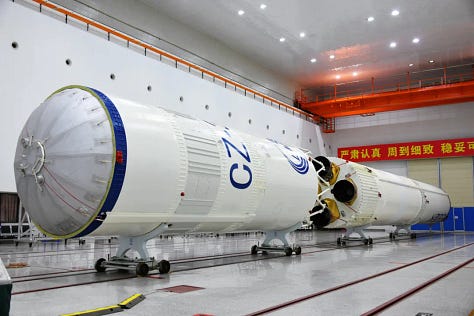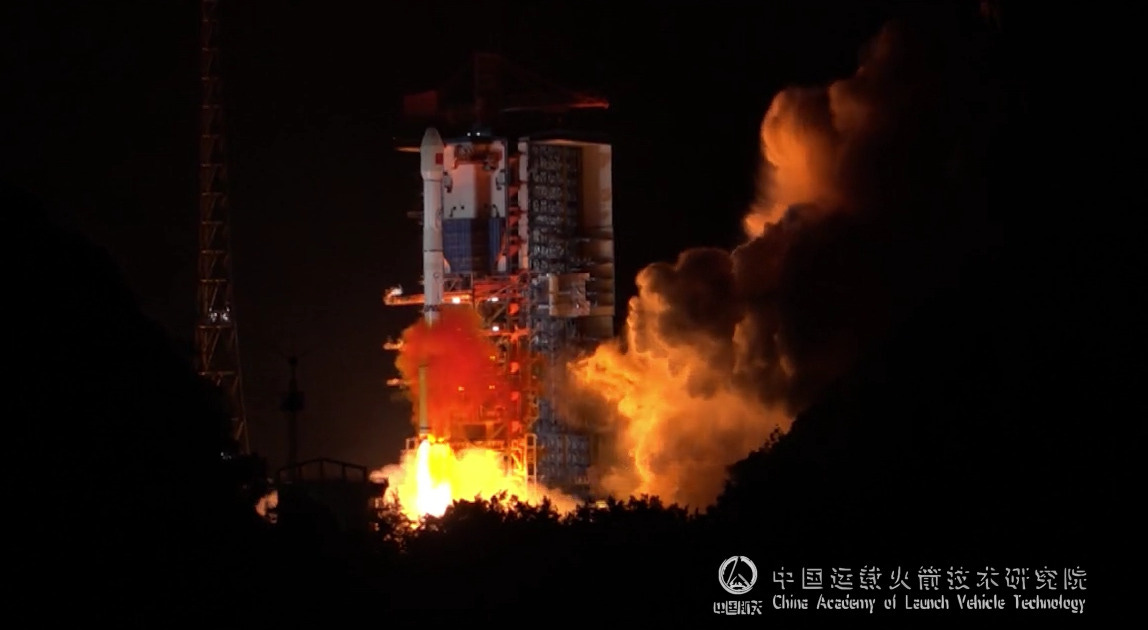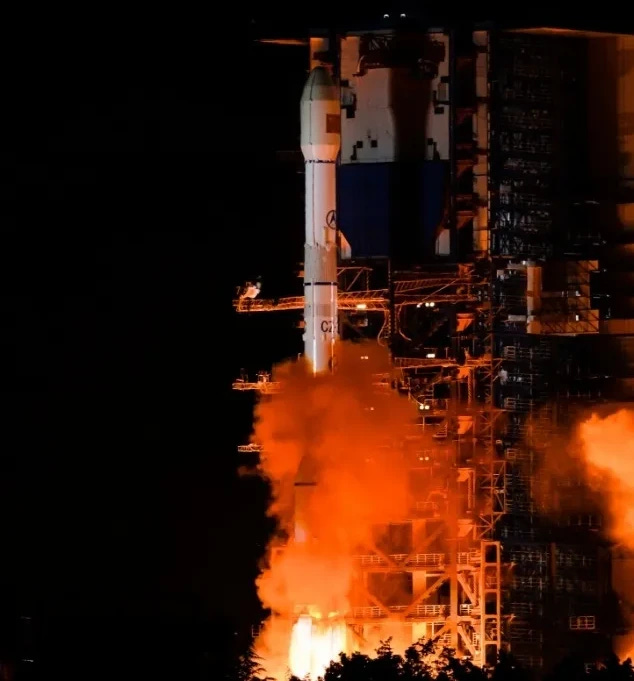Fourth Heavenly King for TJSW-19 [Long March 3C/E]
And the Long March 3C is back after a gap of almost four years.
From Launch Complex 3 at the Xichang Satellite Launch Center, a Long March 3C blasted off at 02:09 am China Standard Time on May 13th (18:09 pm Universal Coordinated Time on May 12th). Atop of the first Long March 3C/E in almost four years was a single satellite heading toward geostationary orbit.
That single satellite was the TJSW-19 spacecraft (通信技术试验卫星十九号), called Communication Technology Experimental Satellite-19 in English. Like other TJSW satellites launched this year, four between January, March (twice), and April, uses for the satellite, developed by the Shanghai Academy of Spaceflight Technology, are set to be communications, radio, television, and data transmission, as well as testing and verification for multi-band high-speed throughput communications technologies.
Interestingly, the patches for the TJSW-15, TJSW-16, TJSW-17, and today’s TJSW-19 satellites are based on the Four Heavenly Kings of Buddhism, which is the largest recognized religion in China. The Heavenly Kings, on the patches, were launched in the following order: King of the West Virūpakkha (TJSW-15), he who sees all, King of the East Dhatarattha (TJSW-16), he who upholds the realm, King of the North Vessavana (TJSW-17), he who hears everything, and King of the South Virūlhaka (TJSW-19), he who causes to grow.

As mentioned earlier, this was the first Long March 3C/E in almost four years, with the last launch forty-six months ago in July 2021. According to the China Academy of Launch Vehicle Technology, the Long March 3C/E has inherited improvements, optimizations, and reliability upgrades made to the Long March 3B/E during its gap in flights. Additionally, a payload capacity increase of 40 kilograms was stated.
This was occurring while the Long March 3B/E, on which the rocket is based, is performing a busy year of launches. So far, seven Long March 3B/E’s have flown this year, all successfully.
Today’s mission was the 19th launch of a Long March 3C vehicle, and the 575th launch of the Long March launch vehicle series. This was also the 26th launch from China in 2025.
Liftoff video via 卡尔达瓦里希 on Weibo.
Check out the previous Xichang launch
Tiangong Bandwidth Set to Grow [Long March 3B/E]
Blasting off from Launch Complex 2 at the Xichang Satellite Launch Center on April 27th at 23:54 pm China Standard Time (15:54 pm Universal Coordinated Time), a Long March 3B/E headed toward a geostationary transfer orbit, carrying a single satellite.
What is the Long March 3C/E?
This section is for those less familiar with China's Long March series of launch vehicles.
The Long March 3C is the less capable derivative of the Long March 3B designed by the China Academy of Launch Vehicle Technology to be a cheaper offering for customers who don't have a satellite heavy enough for a more capable vehicle. The first two stages and two boosters of the rocket burn Dinitrogen Tetroxide and Unsymmetrical Dimethylhydrazine, with liquid hydrogen and liquid oxygen in the third-stage.
Over the rocket's almost sixteen-year launch history, two versions of the vehicle have flown, the 3C and 3C/E. Since 2016 only the 3C/E variant has flown due to its increased payload capacity. The payload capacity of the launch vehicle is currently as follows:
8,000 kilograms to low Earth orbit
3,900 kilograms into a geostationary transfer orbit
The first-stage is powered by four YF-21C engines that burn Dinitrogen Tetroxide and Unsymmetrical Dimethylhydrazine to generate 302 tons of thrust, while the boosters are powered by one YF-25 engine burning the same fuel to generate 72 tons of thrust each. Combined, the two boosters and first stage generate a thrust of 446 tons. The second stage is powered by one YF-22E and four YF-23F vernier engines that also burn Dinitrogen Tetroxide and Unsymmetrical Dimethylhydrazine to generate 81 tons of thrust. The third-stage is powered by two YF-75 engines that burn liquid hydrogen and liquid oxygen to generate 17 tons of thrust.
On the launch pad, the Long March 3B/E is 55.6 meters tall and weighs 345,000 kilograms when fully fuelled. The first and second-stage have a diameter of 3.35 meters, while the third-stage has a diameter of 3 meters, along with the two boosters' diameter of 2.25 meters, and the fairing has a diameter of 4.2 meters.
So far, every Long March 3C launch has occurred from the Xichang Satellite Launch Center, in the south of Sichuan province.







![Tiangong Bandwidth Set to Grow [Long March 3B/E]](https://substackcdn.com/image/fetch/$s_!-vVU!,w_1300,h_650,c_fill,f_auto,q_auto:good,fl_progressive:steep,g_auto/https%3A%2F%2Fsubstack-post-media.s3.amazonaws.com%2Fpublic%2Fimages%2F3d021281-2ae6-402f-a426-5a85384cbefe_5857x3524.jpeg)
